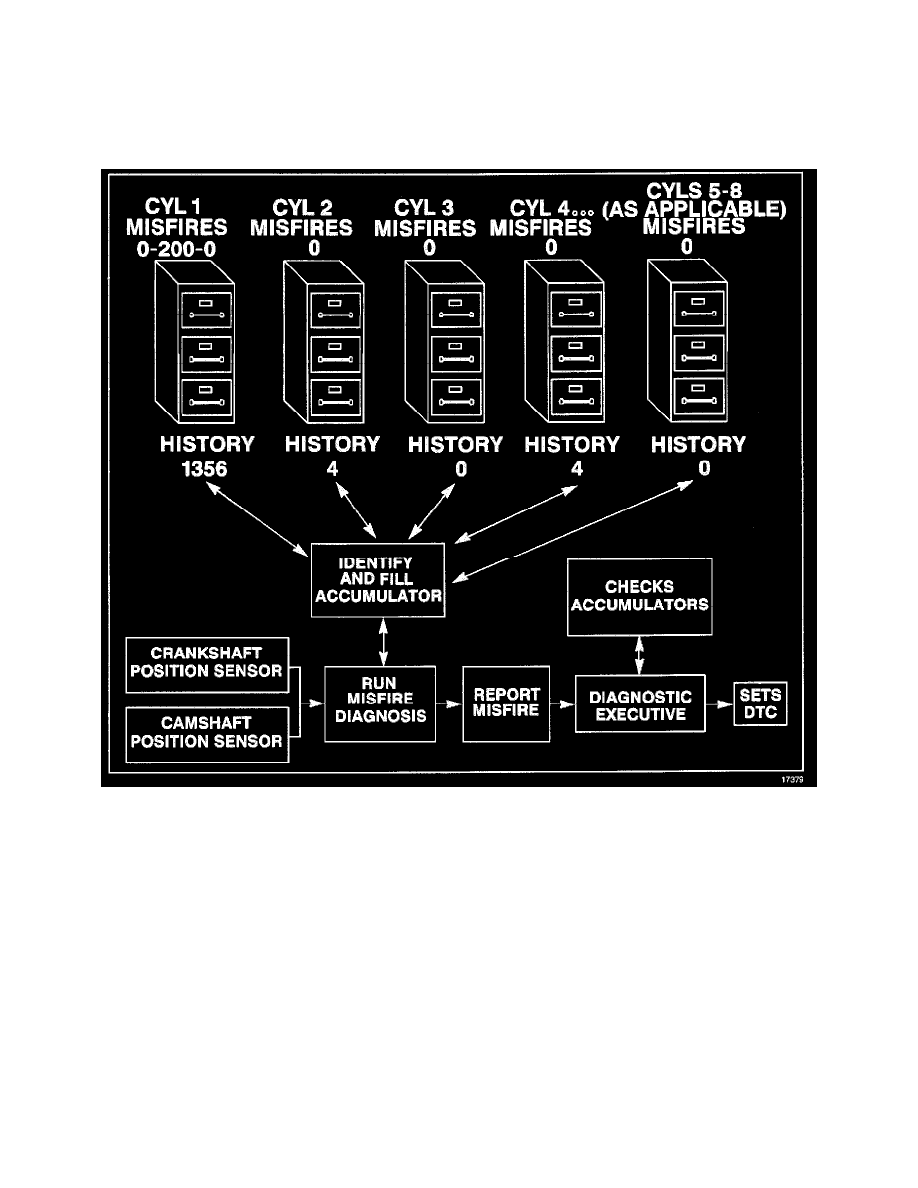Astro Van 2WD V6-4.3L VIN W (2001)

sends data via the serial data bus to the PCM to disable the misfire monitor until the rough road is no longer detected.
On automatic transmission equipped vehicles, the Torque Converter Clutch (TCC) disables whenever a misfire is detected. Disabling the TCC isolates
the engine from the rest of the drive line and minimizes the effect of the drive wheel inputs on crankshaft rotation.
When the TCC has disabled as a result of misfire detection, the TCC is re-enabled after approximately 3,200 engine revolutions if no misfire is detected.
The TCC remains disabled whenever the misfire is detected, with or without a DTC set. This allows the misfire diagnostic to reevaluate the system.
Whenever a cylinder misfires, the misfire diagnostic counts the misfire and notes the crankshaft position at the time the misfire occurred.
A current and a history misfire counter is maintained for each cylinder. The misfire current counters, Misfire Cur # 1 - 8, indicate the number of firing
events out of the last 200 cylinder firing events which were misfires. The misfire current counters displays real time data without a misfire DTC stored.
The misfire history counters, Misfire Hist # 1 - 8, indicate the total number of cylinder firing events which were misfires. The misfire history counters
display 0 until the misfire diagnostic has failed and a DTC P0300 is set. Once the misfire DTC sets, the misfire history counters will be updated every
200 cylinder firing events. The Misfire counters graphic illustrates how these misfire counters are maintained.
When crankshaft rotation is erratic, the PCM detects a misfire condition. Because of this erratic condition, the data that is collected by the diagnostic can
sometimes incorrectly identify which cylinder is misfiring. The Misfire Counters graphic shows there are misfires counted from more than one cylinder.
Cylinder #1 has the majority of counted misfires. In this case, the misfire counters would identify cylinder #1 as the misfiring cylinder. The misfires in
the other counters were just background noise caused by the erratic rotation of the crankshaft. If the number of accumulated misfires is sufficient for the
diagnostic to identify a true misfire, the diagnostic will set DTC P0300 - Misfire Detected. The illustration depicts an accumulation in the history buffers.
If two cylinders in sequential firing order are both misfiring, the first misfiring cylinder will accumulate misfires in its buffer, but the second misfiring
cylinder will not. This is because the PCM compares a misfiring cylinder with the cylinder 90 degrees prior to it in the firing order. Therefore the PCM
would be comparing crankshaft speed of the second misfiring cylinder to an already suspect cylinder. The PCM however, will be able to detect both
misfiring cylinders after the engine exceeds 2,000 RPM. This is because the PCM then starts to compare misfires to the opposing cylinder rather than the
previous cylinder in the firing order.
